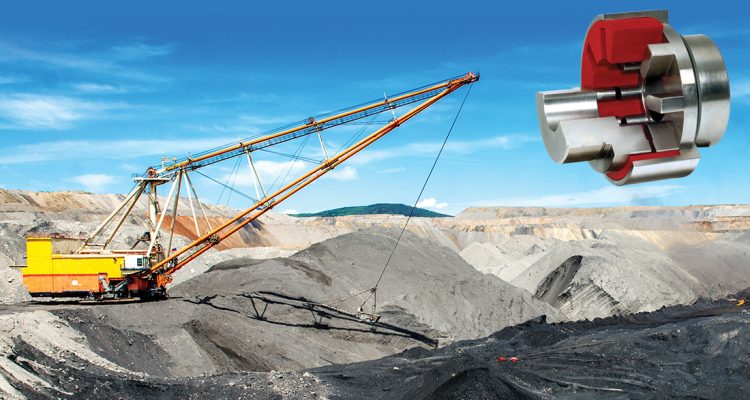In the mining industry, draglines are a key piece of excavation equipment that have largely maintained the same design and functionality since they were first invented in 1904 by John W. Page, owner of Page Engineering Company.
Essentially a giant walking shovel– using large buckets, rigged wires, and a boom arm– draglines operate similarly to cranes in their ability to hoist large volumes of extracted materials from pit to pile.
Since their intended purpose has always remained relatively the same, there hasn’t been a lot of technological innovations for draglines that have emerged in the past 100 years– in fact, it’s not uncommon to see draglines that are decades old still in operation.
However, there has been advancements in the part and components used in the operation of draglines, particularly power transmission systems, according to Motion Australia’s Steve Hittmann.
“Draglines can be retrofitted with the latest driven part technology to improve their speed, efficiency, and performance in field,” remarks Steve. “But the most notable issue with draglines is the tremendous amount of power they require to operate them. And as most mine sites have fleets of draglines, these requirements can impact an operation’s bottom line significantly.
As National Category Manager for Mechanical Drive Systems and Mobile Final Drives, Steve’s expertise is vast and includes extensive knowledge of gearing, motors, couplings, brakes and clutches.
“Choosing the right power transmission components is more important than many mining operators may realise,” says Steve. “A good quality power transmission solution for a mining operation is one that can accommodate torque, sheer and compressive forces, vibrations, and high speeds. Ideally, it would also be failsafe, maintenance friendly, and reduce downtime on production.”
Recently, when a major coal mining operation in Queensland approached Motion Australia for a power transmission solution for their dragline fleet, they went out to the site to assess the application requirements and determine the best course of action.
“We met with the engineers who were responsible for maintaining their dragline fleet,” he explains. “The site was after a solution to minimise maintenance on their fleet and improve operational efficiency. The existing gear couplings required regular lubrication and were expensive to change out, as the complete coupling assembly needed to be replaced when they reached their fatigue life”
Motion Australia deferred to one of their partners in supplying engineered power transmission solutions– Australian Timken– to assist with providing a solution to the coal mining customer, with specific emphasis toward the Timken Quick-Flex® Coupling.
Brad Womersley, Regional Sales Manager at Australian Timken, recommended the Timken Quick-Flex® couplings to power the hoist, drag and propel machinery. “We chose the ‘fit-and-forget’ Timken Quick-Flex® 3150 Couplings for their maximum tolerance to force, minimal maintenance, and ease of installation,” says Brad.
“The easy fitment in the envelope design means no metal-to-metal contact and eliminates the need for lubrication. Furthermore, service life of our Quick-Flex® Couplings typically matches that of the equipment itself, which is ideal for draglines that will be in-field for years for reducing the total cost of ownership.”
The Quick-Flex® 3150 Couplings were installed on three of the coal mining site’s draglines. Since then, the customer has reported that the couplings have been operating faultlessly, according to Steve.
“This was a win for both Motion Australia and Australian Timken because the success on the initial machines opens door for the rest of the site’s dragline fleet,” he concludes. “In an industry like coal mining that often operates on legacy equipment, processes, and procedures, this could mean future engineering opportunities and further growth for us in the coal mining sector.”
Why Maddie the Miner loves Timken Quickflex® Couplings:
Applications:
•
Motor to gearbox (low torque/high speed)
•
Gearbox to driven equipment (high torque/low speed)
•
Motors to pumps
•
Any driven shaft
Features and Benefits:
• Versatile design that is interchangeable with most coupling arrangements and can be standardised across a site
• Able to withstand up to two degrees of misalignment
• Dampens vibration and withstands repeated high shock load to the equipment
• Available in standard, single-ended spacer, double-ended spacer, or spined hub designs
• No metal-to-metal contact
• Designed for continuous and peak torque levels. Split cover options help resist axial separating force under high torque.
• Four bore options available to meet customers’ needs: Bored, Bushing, Splined and Mill Motor style.
• Four insert choices for varying torque needs
• Withstand temperature up to 176°C

